Introduction to Bayesian Modeling with PyMC
PyCon Colombia 2022
Dr. Juan Orduz
Why Bayesian Modeling?
- Conceptually transparent interpretation of probablity.
- Uncertainty quantification.
- Allows to explicitly include prior knowledge in the model.
- Felxible and suited for many applications in academia and industry.
- Scalable*
Why PyMC?

Learn more: PyMC 4.0 Release Announcement
Bayesian Inference : An Example
Suppose you see a person with long hair. You want to estimate the probablity that this person is a woman. That is, for \(A = \text{woman}\) and \(B = \text{long hair}\), we want to estimate \(P(A|B)\)
Prior-Information
You belive \(P(A) = 0.5\), \(P(B)=0.4\) and \(P(B|A) = 0.7\).
Bayes Rule
\[ P(A|B) = \frac{P(A)\times P(B|A)}{P(B)} = \frac{0.5 \times 0.7}{0.4} = 0.875 \]
Some Examples: Distributions
Bayesian Approach to Data Analysis
Assume \(y\sim p(y|\theta)\), where \(\theta\) is a parameter(s) for the distribution (e.g. \(y\sim N(\mu, \sigma^2)\)). From Bayes Theorem:
\[ p(\theta|y)=\frac{p(y|\theta) \times p(\theta)}{p(y)} = \displaystyle{\frac{p(y|\theta)\times p(\theta)}{\color{red}{\int p(y|\theta)p(\theta)d\theta}}} \]
- The function \(p(y|\theta)\) is called the
likelihood. - \(p(\theta)\) is the
priordistribution of \(\theta\).
\[ p(\theta|y) \propto \text{likelihood} \times \text{prior}. \]
Integrals are hard to compute \(\Longrightarrow\) we need samplers.
Example : Linear Regression
\[\begin{align*} y & \sim \text{Normal}(\mu, \sigma^2)\\ \mu & = a + bx \end{align*}\]
Objective: We want to estimate the (posterior) distributions of \(a\), \(b\) (and hence \(\mu\)) and \(\sigma\) given \(x\) and \(y\).
Example : Linear Regression
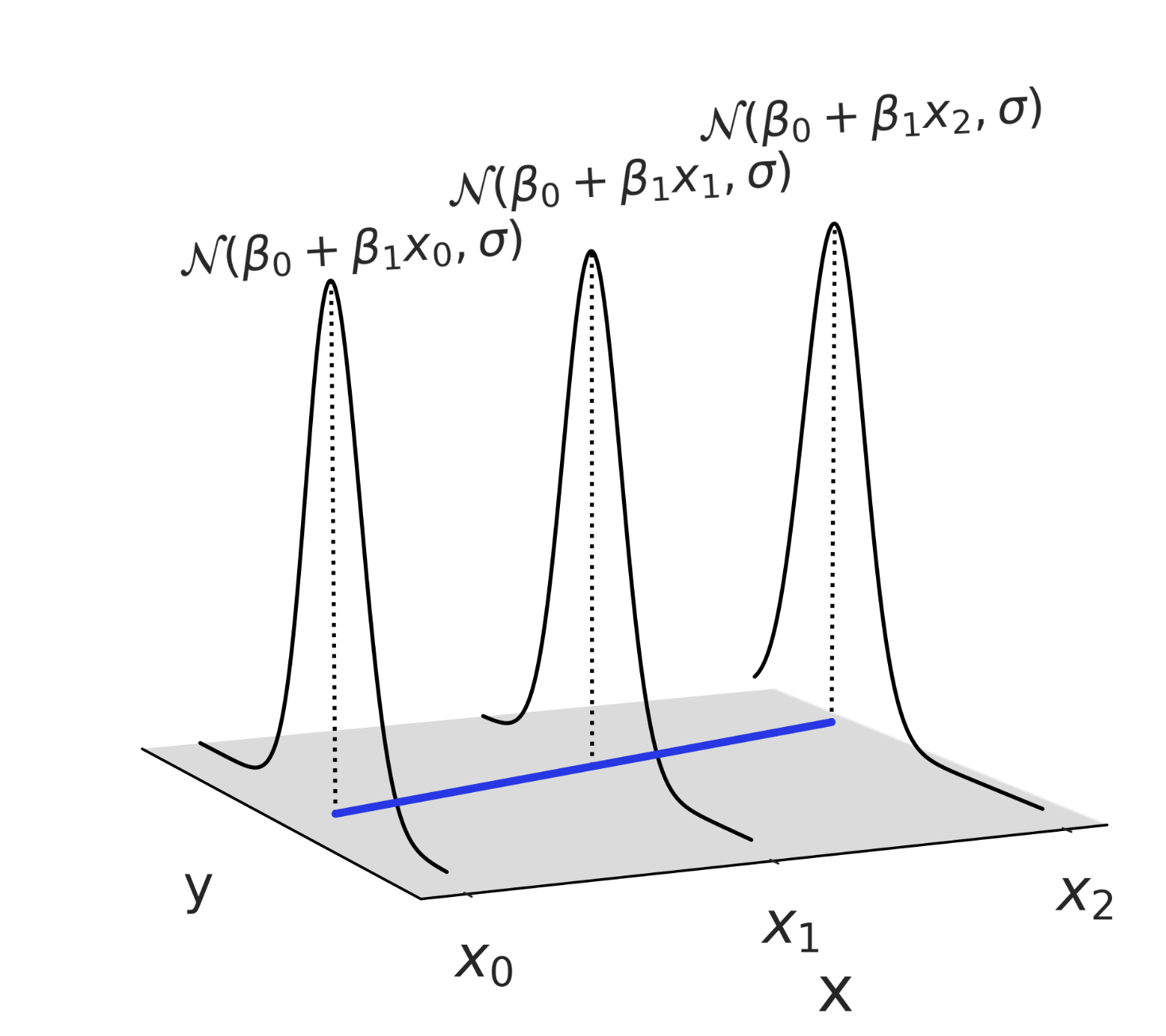
Model Specification: Math
Model Parametrization: \[\begin{align*}
y & \sim \text{Normal}(\mu, \sigma^2)\\
\mu & = a + bx \\
\end{align*}\]
Prior Distributions: \[\begin{align*}
a & \sim \text{Normal}(0, 2)\\
b & \sim \text{Normal}(0, 2) \\
\sigma & \sim \text{HalfNormal}(2)
\end{align*}\]
Model Specification: PyMC
with pm.Model(coords={"idx": range(n_train)}) as model:
# --- Data Containers ---
x = pm.MutableData(name="x", value=x_train)
y = pm.MutableData(name="y", value=y_train)
# --- Priors ---
a = pm.Normal(name="a", mu=0, sigma=2)
b = pm.Normal(name="b", mu=0, sigma=2)
sigma = pm.HalfNormal(name="sigma", sigma=2)
# --- Model Parametrization ---
mu = pm.Deterministic(name="mu", var=a + b * x, dims="idx")
# --- Likelihood ---
likelihood = pm.Normal(
name="likelihood", mu=mu, sigma=sigma, observed=y, dims="idx"
)Compare to:
Prior Predictive Sampling
Prior samples before passing the data through the model.
Fit Model
with model:
idata = pm.sample(target_accept=0.8, draws=1_000, chains=4)
posterior_predictive = pm.sample_posterior_predictive(trace=idata)Posterior samples distriibution via NUTS sampler in PyMC. For each parameter we run 4 iindependent chains with 1000 samples each.
Posterior Predictive (Training Set)
Posterior Predictive (Test Set)
Model Variations: Prior Constraints
with pm.Model(coords={"idx": range(n_train)}) as model:
# --- Data Containers ---
x = pm.MutableData(name="x", value=x_train)
y = pm.MutableData(name="y", value=y_train)
# --- Priors ---
a = pm.Normal(name="a", mu=0, sigma=2)
b = pm.HalfNormal(name="b", sigma=2)
sigma = pm.HalfNormal(name="sigma", sigma=2)
# --- Model Parametrization ---
mu = pm.Deterministic(name="mu", var=a + b * x, dims="idx")
# --- Likelihood ---
likelihood = pm.Normal(
name="likelihood", mu=mu, sigma=sigma, observed=y, dims="idx"
)Compare to:
sklearn.linear_model.LinearRegression with positive = True.
Model Variations: Regularization
with pm.Model(coords={"idx": range(n_train)}) as model:
# --- Data Containers ---
x = pm.MutableData(name="x", value=x_train)
y = pm.MutableData(name="y", value=y_train)
# --- Priors ---
a = pm.Normal(name="a", mu=0, sigma=2)
b = pm.Laplace(name="b", sigma=2)
sigma = pm.HalfNormal(name="sigma", sigma=2)
# --- Model Parametrization ---
mu = pm.Deterministic(name="mu", var=a + b * x, dims="idx")
# --- Likelihood ---
likelihood = pm.Normal(
name="likelihood", mu=mu, sigma=sigma, observed=y, dims="idx"
)Compare to:
Model Variations: Robust Regression
with pm.Model(coords={"idx": range(n_train)}) as model:
# --- Data Containers ---
x = pm.MutableData(name="x", value=x_train)
y = pm.MutableData(name="y", value=y_train)
# --- Priors ---
a = pm.Normal(name="a", mu=0, sigma=2)
b = pm.Normal(name="b", mu=0, sigma=2)
sigma = pm.HalfNormal(name="sigma", sigma=2)
nu = pm.Gamma(name="nu", a=10, b=10)
# --- Model Parametrization ---
mu = pm.Deterministic(name="mu", var=a + b * x, dims="idx")
# --- Likelihood ---
likelihood = pm.StudentT(
name="likelihood", mu=mu, sigma=sigma, nu=nu, observed=y, dims="idx"
)Compare to:
Example: Bike Rental Model
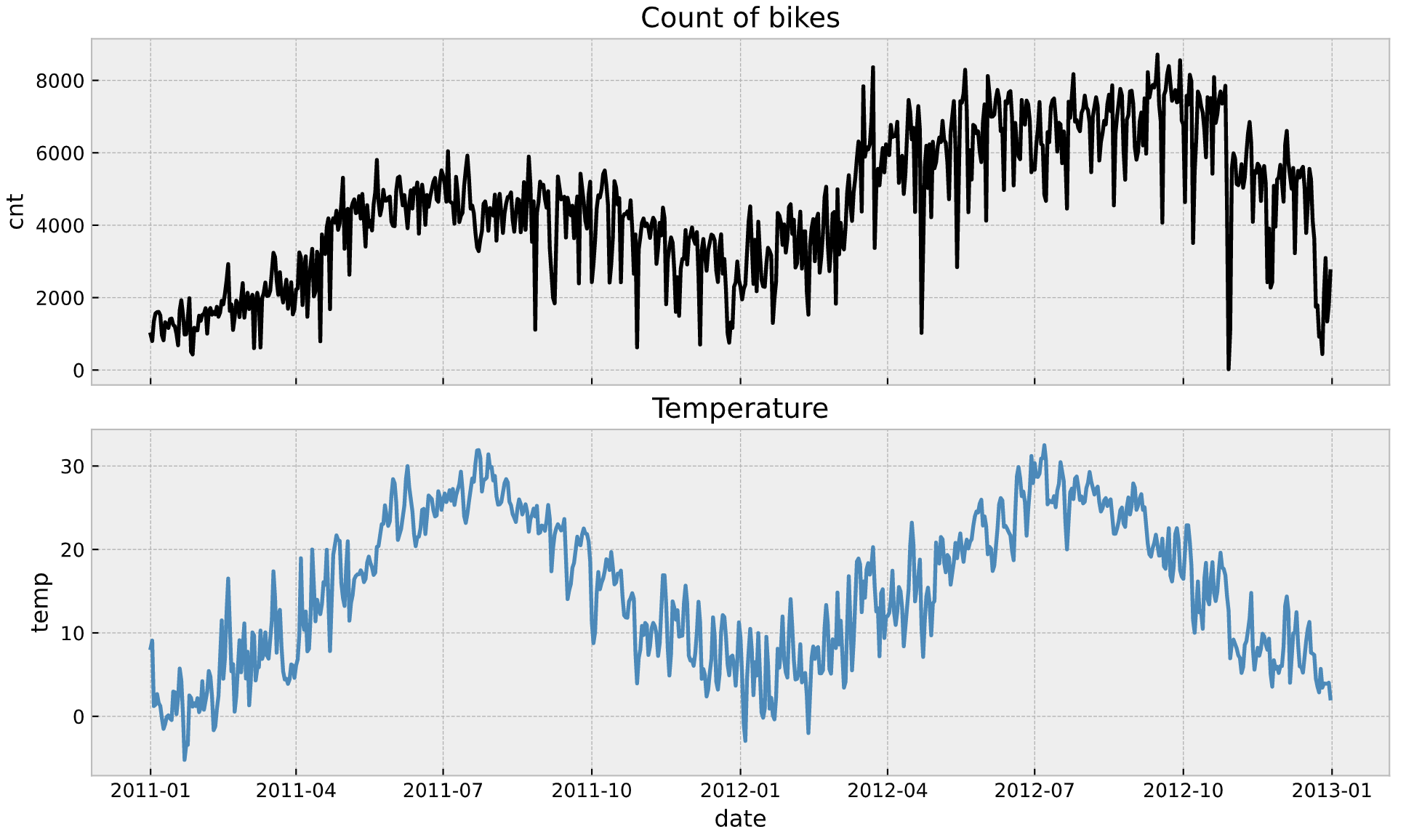
Example: Bike Rental Model
Linear Regression Baseline
\[ \text{cnt} = \text{intercept} + b_{\text{temp}}\text{temp} + \cdots \]
Example: Bike Rental Model
Linear Regression Baseline
Example: Bike Rental Model
Two ML Models: Linear Regression (\(L^1\)) with second order interactions and XGBoost
Example: Bike Rental Model
Two ML Models: Both see a negative effect of temperature in bke rentals ini the month of July.
Example: Bike Rental Model
Time-Varying Coefficients
\[ b(t) \sim N(b(t - 1), \sigma^2) \]
Example: Bike Rental Model
Time-Varying Coefficients
Example: Bike Rental Model
Time-Varying Coefficients
Example: Bike Rental Model
Time-Varying Coefficients
Effect of temperature on bike rentals as a function of tmie for a time varying coeffiicient model (via Gaussian random walk).
Application: Media Mix Model (MMM)
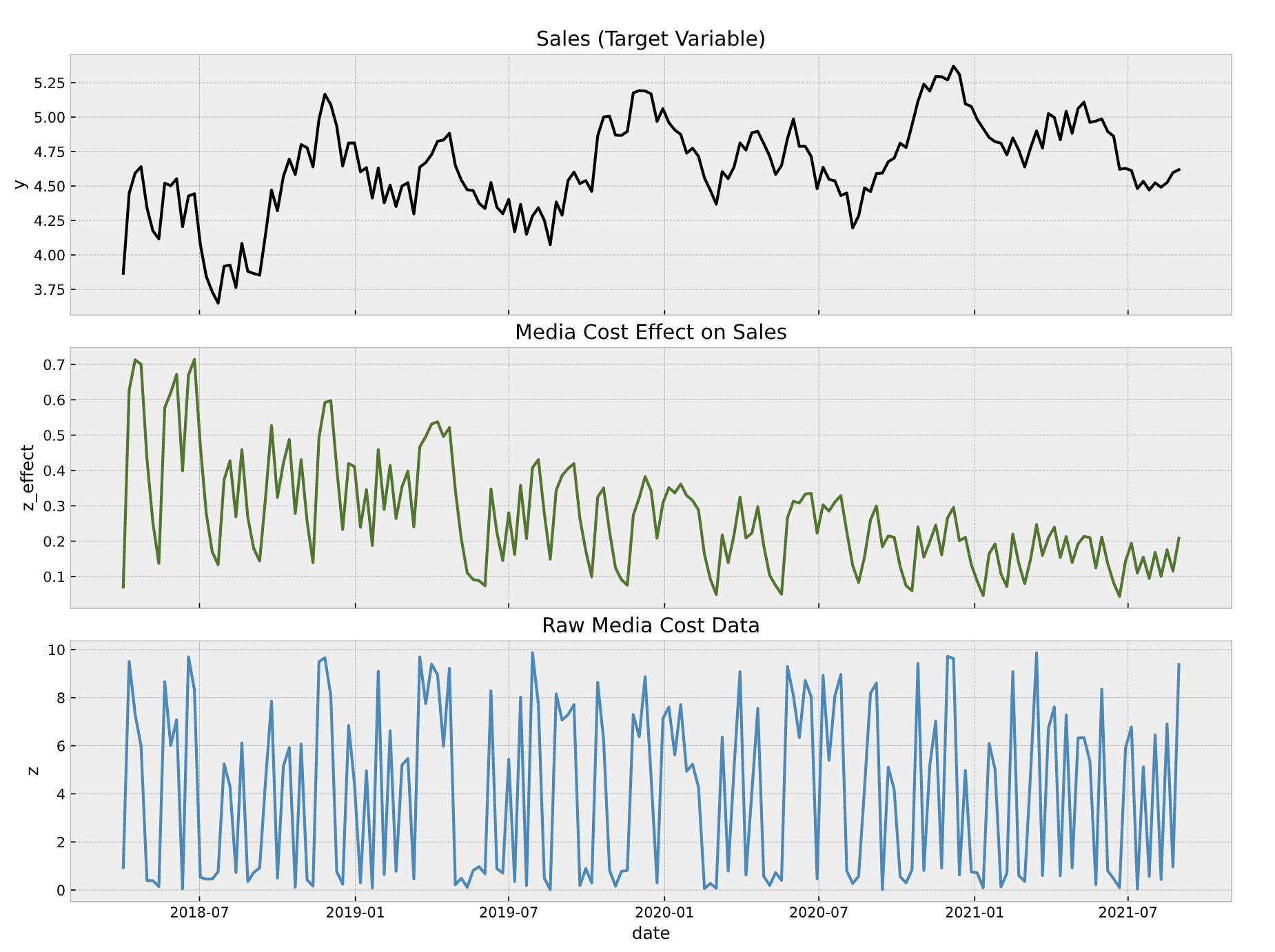
Application: Media Mix Model (MMM)

MMM structure: Media data (cost, impressions or clicks) is modeled using carryover effects (adstock) and saturation effects. In addition, one can control for seasonality and external regressors. In this example, we allow time-varying coefficients to capture the effect development over time.
Application: Media Mix Model (MMM)
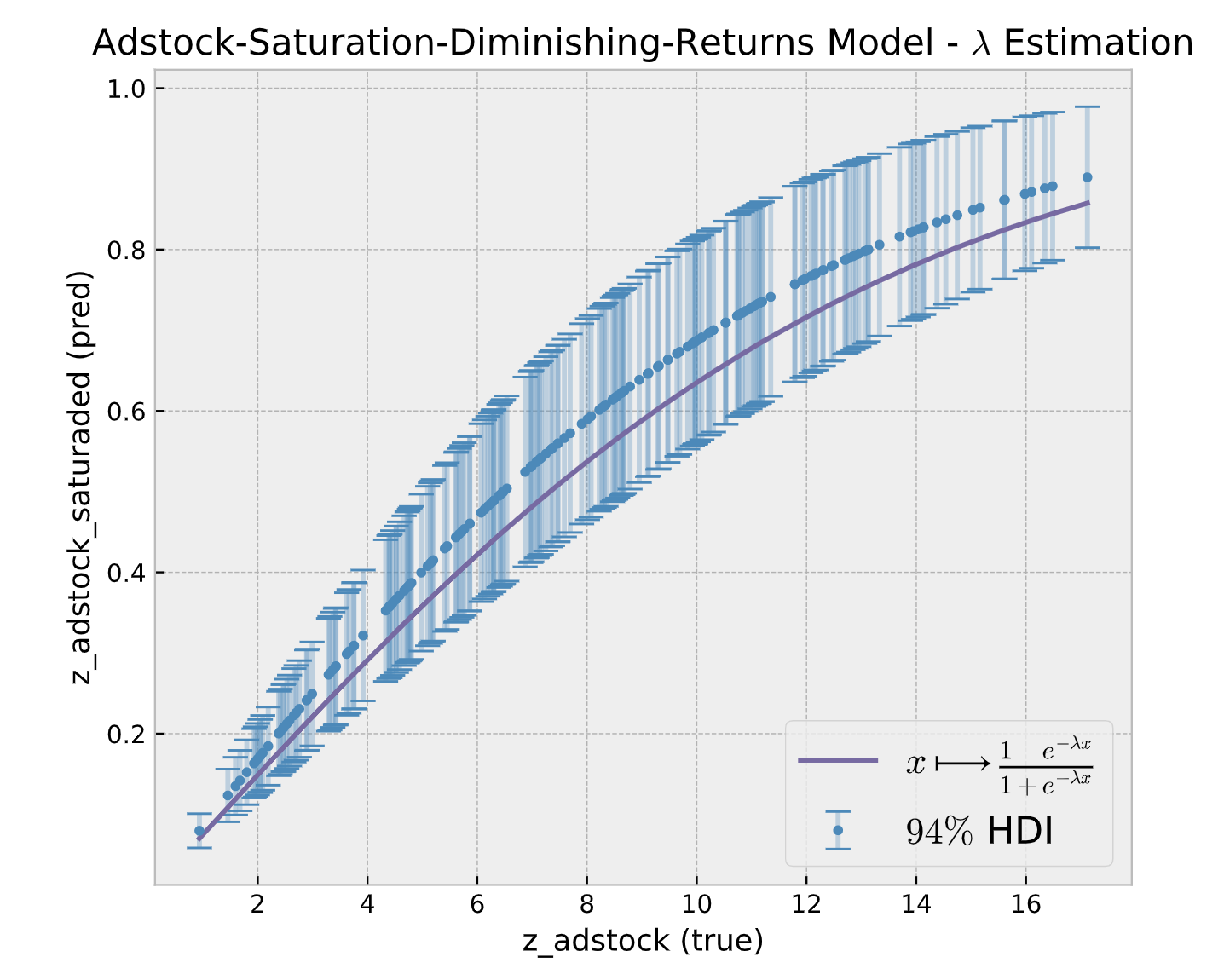

Many More Examples and Applications!
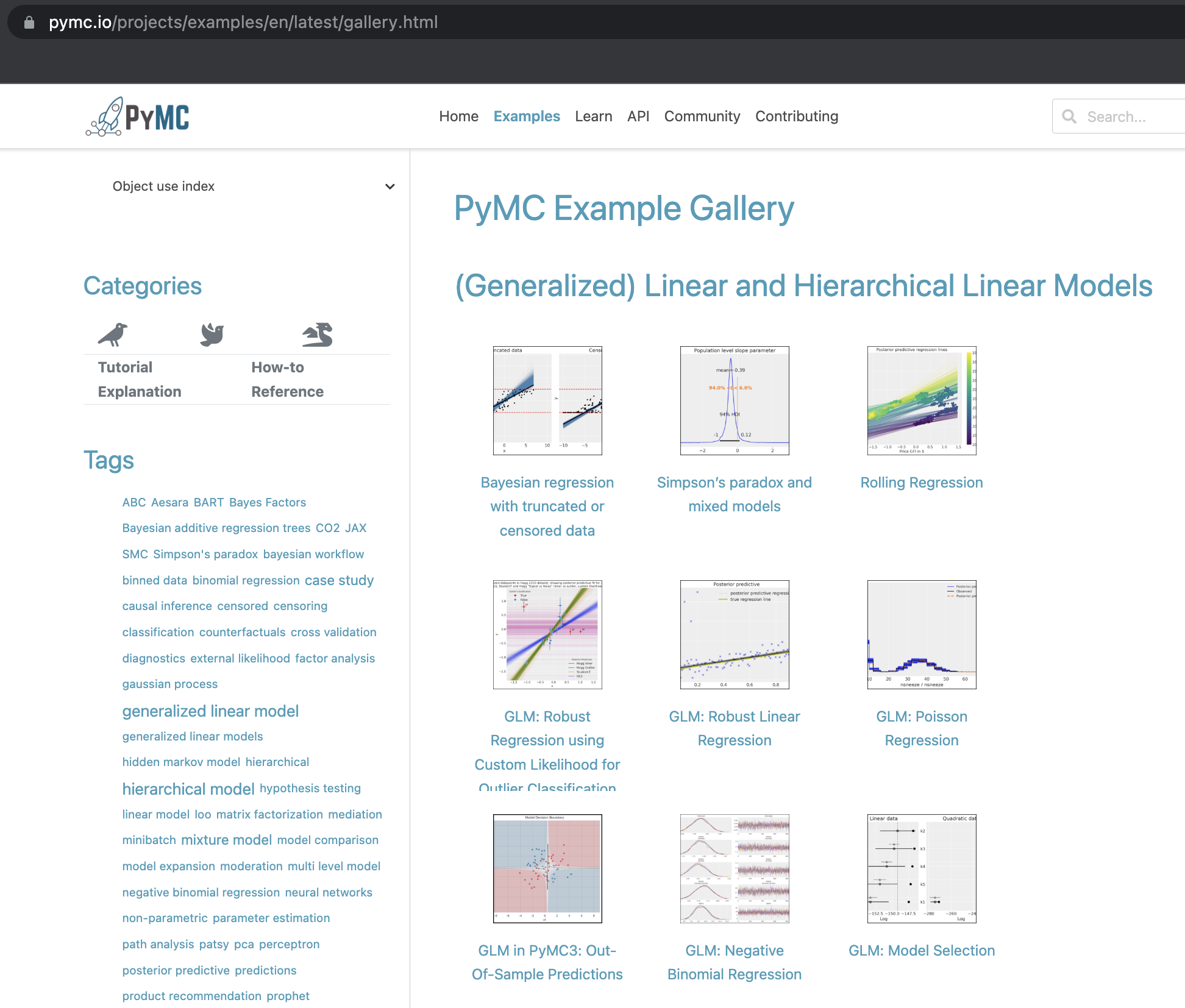
References
Theory
PyMC
Use cases
Thank you!
